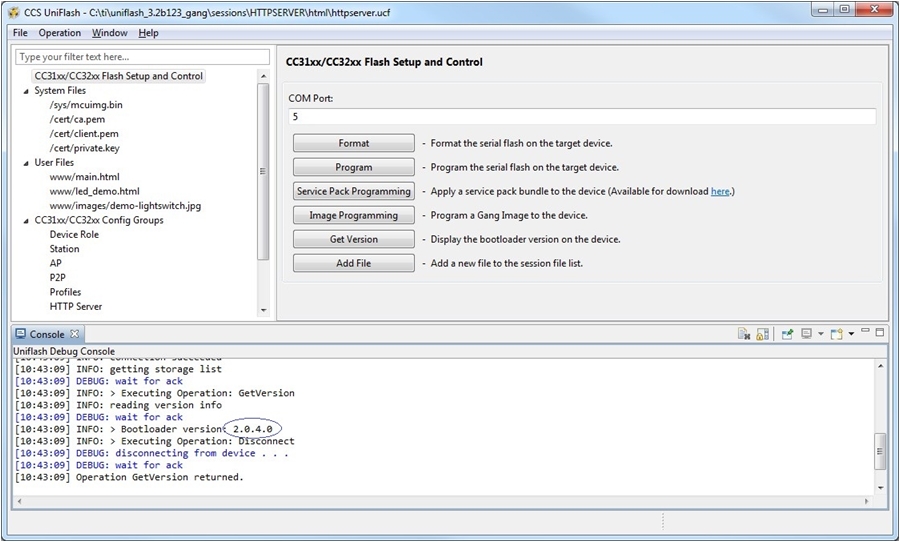SWRU558 June 2020 CC3100 , CC3100MOD , CC3200 , CC3200MOD
-
SimpleLink Wi-Fi CC3100, CC3200 UniFlash
- Trademarks
- 1 Introduction
- 2 Installation
- 3 Prerequisites
- 4 Uniflash Block Diagram
- 5 Session Support
- 6 Secured File System Support
- 7 GUI Interface
- 8 CC3200 Support
- 9 Command Line Support
- 10 Configuration File Support
- 11 Image Creation and Programming
- 12 Troubleshoot/Debugging
- 13 Limitations
- 14 References
- A UART Connection
7.4 Get Version
The version that can be fetched from the device is the bootloader version (as Uniflash interacts with the bootloader section). Additionally, the chipset version is fetched. The bootloader version is composed of four numbers, separated by periods.
The syntax is:
<SoftwareMajor.SoftwareMinor.SoftwareVersion.SoftwareSubVersion>
Note that the bootloader version fetched is the one that is located in ROM.
 Figure 9. Get Version
Figure 9. Get Version As can be seen in Figure 9, invoking 'Get Version' results in version 2.0.4.0 printed on the 'Console' sub screen.